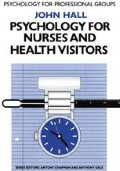Abstract
From a situation in the mid-1960s when ‘counselling’ was seen by many in education as a transatlantic transplant which hopefully would never ‘take’, we have today reached the position of being on board a band-wagon; ‘counsellors’ are everywhere: beauty counsellors, tax counsellors, investment counsellors, even carpet counsellors. There are ‘counsellors’ in schools, industry, hospitals, the social services. There is marriage counselling, divorce counselling, parent counselling, bereavement counselling, abortion counselling, retirement counselling, redundancy counselling, career counselling, psychosexual counselling, pastoral counselling, student counselling and even disciplinary counselling! Whatever the original purpose for coining the word ‘counselling’, the coinage has by now certainly been debased. One of the unfortunate consequences of the debasing has been that the word has become mysterious; we cannot always be sure just what ‘counselling’ involves. One of the results of the mystification of language is that we rely on others to tell us what it is: that is, we assume that we, the uninitiated, cannot know and understand what it is really about. That can be a first step to denying ourselves skills and knowledge we already possess or that we may have the potential to acquire.
Preview
Unable to display preview. Download preview PDF.
References
Aspy, D. and Roebuck, F. (1977) Kids Don’t Learn from People They Don’t Like. Amherst, Mass.: Human Resource Development Press.
Brammer, L.M. (1973) The Helping Relationship. Englewood Cliffs, NJ: Prentice-Hall.
Carkhuff, R.R. (1974) The Art of Helping. Amherst, Mass.: Human Resource Development Press.
Carkhuff, R.R. and Berenson, B.G. (1976) Teaching As Treatment. Amherst, Mass.: Human Resource Development Press.
Cooper, C.L. and Mangham, I.L. (eds) (1971) T-Groups: A survey of research. Chichester: Wiley.
Egan, G. (1975) The Skilled Helper. Monterey, Ca: Brooks/Cole.
Hopson, B. (1977) Techniques and methods of counselling. In A.G. Watts (ed.), Counselling at Work. London: Bedford Square Press.
Hopson, B. and Scally, M. (1980a) Lifeskills Teaching: Education for self-empowerment. Maidenhead: McGraw-Hill.
Hopson, B. and Scally, M. (1980b) Lifeskills Teaching Programmes No. 1. Leeds: Lifeskills Associates.
Illich, I. (1973) Tools of Conviviality. London: Calder & Boyars.
Illich, I., Zola, I.K., McKnight, J., Kaplan, J. and Sharken, H. (1977) The Disabling Professions. London: Marion Boyars.
Ivey, A.E. (1971) Microcounseling: Innovations in interviewing training. Springfield, Ill.: Thomas.
Kagan, N., Krathwohl, D.R. et al (1967) Studies in Human Interaction: Interpersonal process recall stimulated by videotape. East Lansing, Mich.: Educational Publication Services, College of Education, Michigan State University.
Katz, M.R. (1969) Can computers make guidance decisions for students? College Board Review, Resolution:@@Global New York, No. 72.
Loughary, J.W. and Ripley, T.M. (1979) Helping Others Help Themselves. New York: McGraw-Hill.
Parloff, M.B., Waskow, I.E. and Wolfe, B. (1978) Research on therapist variables in relation to process and outcome. In S.L. Garfield and A.E. Bergin (eds), Handbook of Psychotherapy and Behavior Change: An empirical analysis (2nd edn). New York: Wiley.
Rogers, C.R. (1957) The necessary and sufficient conditions of therapeutic personality change. Journal of Consulting Psychology, 21, 95–103.
Rogers, C.R. (1958) The characteristics of a helping relationship. Personnel and Guidance Journal, 37, 6–16.
Scally, M. and Hopson, B. (1979) A Model of Helping and Counselling: Indications for training. Leeds: Counselling and Careers Development Unit, Leeds University.
Smith, P.B. (1975) Controlled studies of the outcome of sensitivity training. Psychological Bulletin, 82, 597–622.
Stonier, T. (1979) On the Future of Employment. N.U.T. guide to careers work. London: National Union of Teachers.
Toffler, A. (1970) Future Shock. London: Bodley Head.
Truax, C.B. and Carkhuff, R.R. (1967) Toward Effective Counselling and Psychotherapy: Training and practice. Chicago, Ill.: Aldine.
Vaughan, T. (ed.) (1976) Concepts of Counselling. London: Bedford Square Press.
Copyright information
© 1982 The British Psychological Society
About this chapter
Cite this chapter
Hopson, B. (1982). Counselling and helping. In: Psychology for Nurses and Health Visitors. Psychology for Professional Groups. Palgrave, London. https://doi.org/10.1007/978-1-349-16884-2_20
Download citation
DOI: https://doi.org/10.1007/978-1-349-16884-2_20
Publisher Name: Palgrave, London
Print ISBN: 978-0-333-31876-8
Online ISBN: 978-1-349-16884-2
eBook Packages: Palgrave Religion & Philosophy CollectionPhilosophy and Religion (R0)

